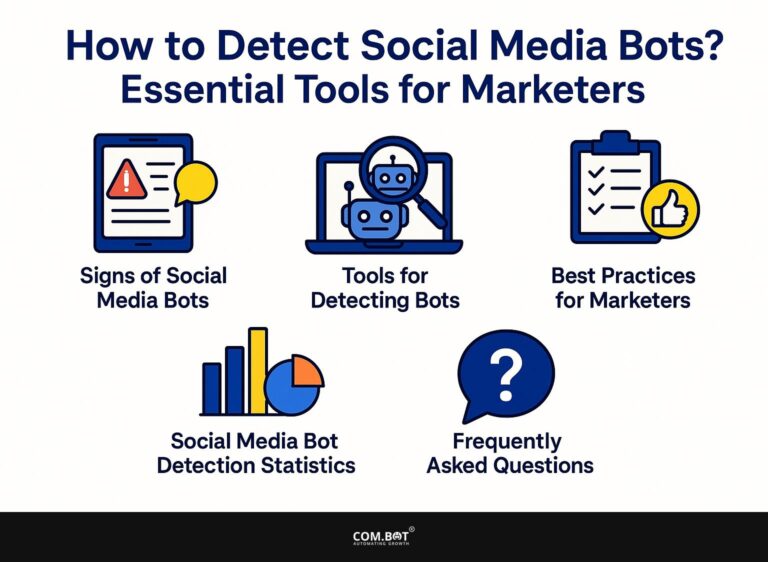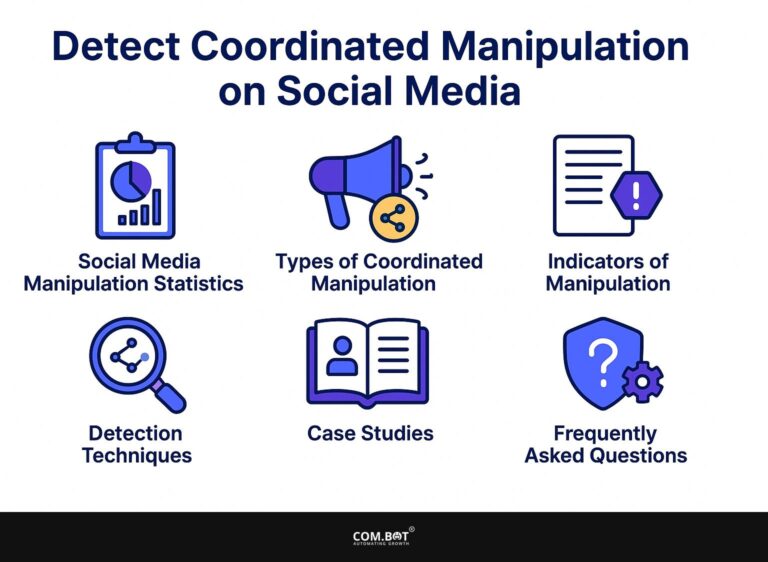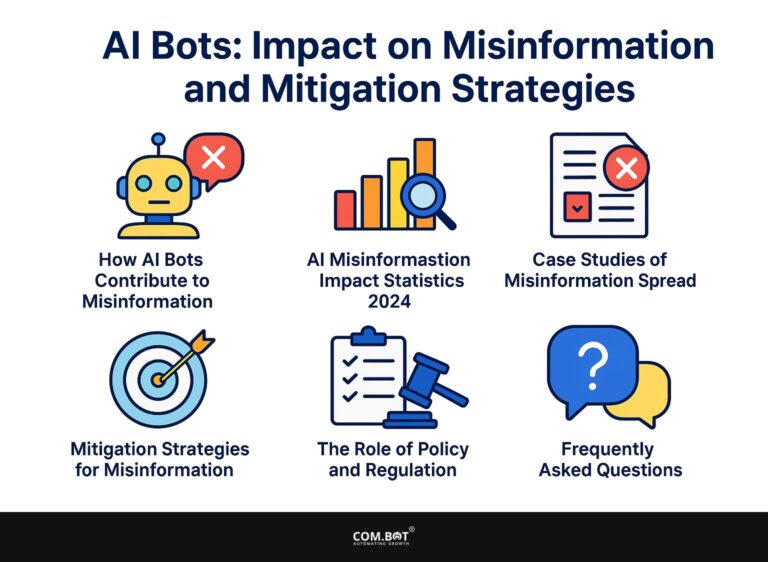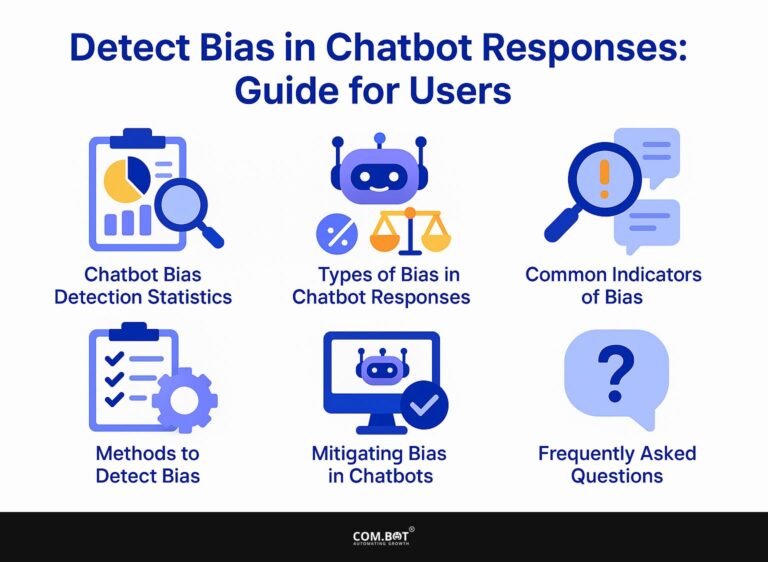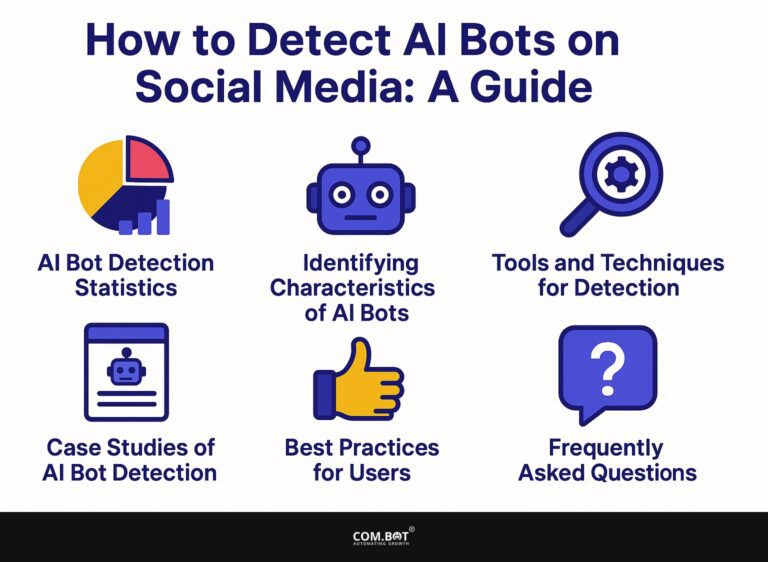Mitigate Social Media Manipulation: Techniques
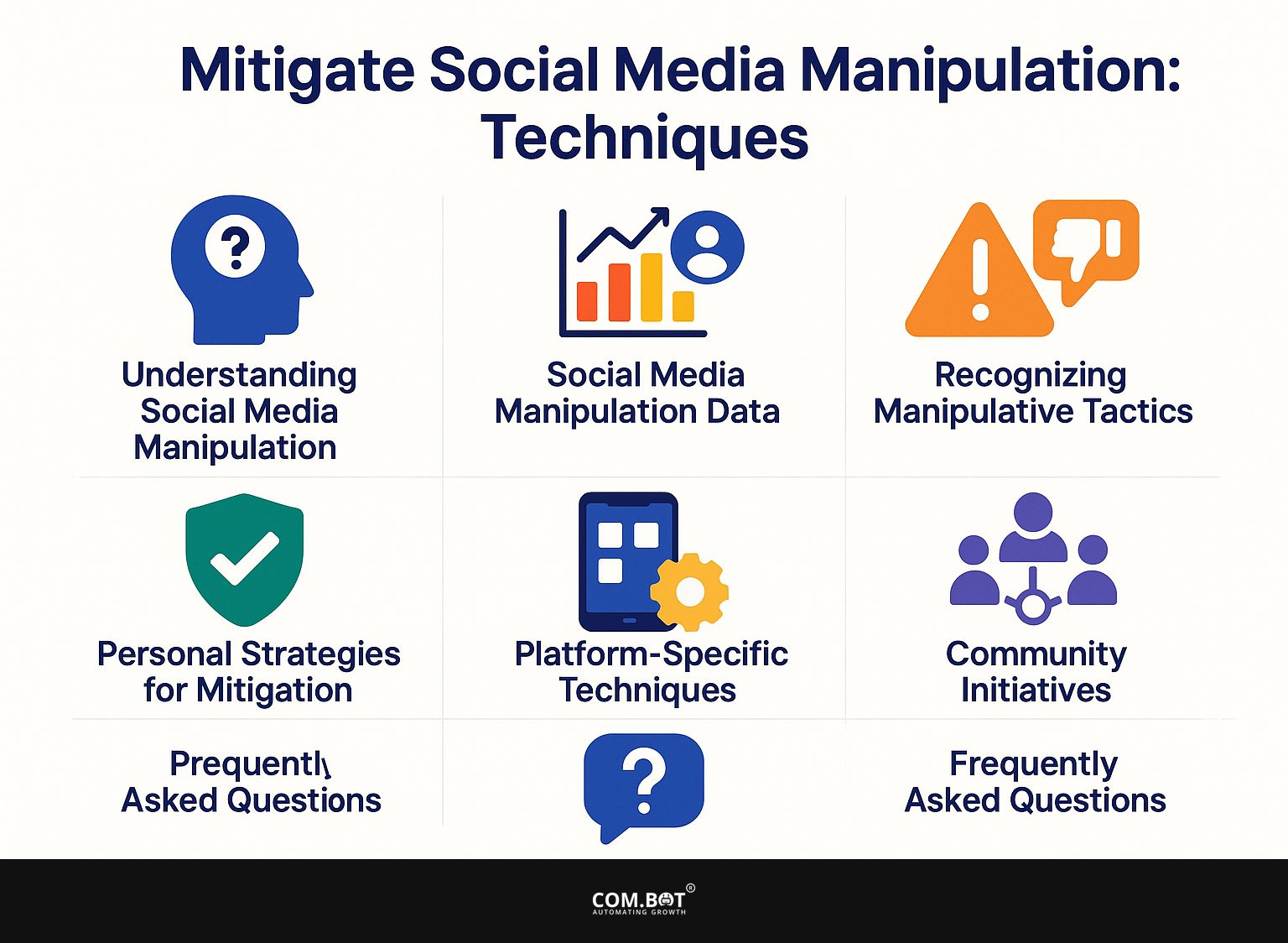
The use of social media to influence public opinion and political communication is a major concern today. Well-known experts, Professor Philip Howard and Dr. Samantha Bradshaw from the Oxford Internet Institute, explain the widespread problems of false information and how it affects people.
This article looks at practical methods to reduce these misleading strategies, giving you the skills to think critically about the complicated online information. Be part of our effort to reveal how social media influences behavior and make your online interactions more effective.
Key Takeaways:
- Stay aware of manipulative tactics such as fake news, emotional manipulation, and echo chambers on social media to protect yourself from their negative impact on society.
- Use problem-solving skills and sources that verify facts to counter false information on social media and make sure the details you read are true and trustworthy.
- Take advantage of platform-specific techniques, such as algorithm awareness and privacy settings, to mitigate social media manipulation and protect your personal information. Also, support community initiatives, like awareness campaigns and educational workshops, to promote a more informed and responsible digital community.
- 1 Understanding Social Media Manipulation
- 2 Social Media Manipulation Data
- 3 Recognizing Manipulative Tactics
- 4 Personal Strategies for Mitigation
- 5 Platform-Specific Techniques
- 6 Community Initiatives
- 7 Frequently Asked Questions
- 7.1 1. What is social media manipulation?
- 7.2 2. What are some common techniques used in social media manipulation?
- 7.3 3. How can I identify social media manipulation?
- 7.4 4. What are the potential consequences of social media manipulation?
- 7.5 5. What are some ways to mitigate social media manipulation?
- 7.6 6. How can I protect myself from falling victim to social media manipulation?
Understanding Social Media Manipulation
Social media manipulation is the planned use of online platforms to shape public views through false information and specific messages.
Social Media Manipulation Data
Social Media Manipulation Data
Countries Engaging in Manipulation
Exploring Manipulation: Techniques and Methods
Grasping Control: Financial and Platform Data
The Social Media Manipulation Data offers a detailed view of the worldwide spread of false information and the methods used to shape public opinion through social media. The data highlights the extent of manipulation across countries, the tactics used, and the financial implications of these activities.
Manipulation Insights reveal that 93 countries are involved in disinformation efforts, showcasing a widespread challenge in maintaining authentic communication. Of these, 81 countries use computational propaganda, while 79 rely on human accounts to spread false narratives. Furthermore, 57 countries use automated bot accounts, and 14 countries use hacked accounts, illustrating a diverse range of tools at disposal to manipulate information.
Strategies and Tactics point out that 76 countries are actively using disinformation strategies, indicating a prevalent use of misleading content to shape opinions or destabilize discourse. The employment of data-driven targeting by 30 countries Proposes a detailed method using data analysis to customize persuasive messages for different groups. Moreover, the increase in state-sponsored trolls from 47 countries in 2019 to 59 in 2020 shows an increasing use of organized fake activities to affect online platforms.
Financial and Platform Data reveals substantial investment in these manipulation efforts, with $60 million spent on amplification strategies. This spending highlights the importance of making disinformation more noticeable. In addition, social media platforms have reacted by taking down 317,000 accounts in an attempt to curb inauthentic activity, yet 89% of this inauthentic activity is delivered within a day, highlighting the speed and efficiency with which these campaigns are executed.
This data highlights the wide-ranging and complicated nature of social media manipulation today. Many countries use different methods to spread false information, creating a big problem for platforms and regulators. Dealing with these threats needs a broad approach that includes technology, policy, and public awareness to protect the honesty of online discussions.
1. Definition and Examples
Social media manipulation encompasses tactics that distort the reality of information shared among users, including orchestrated campaigns by political parties. For instance, during the 2016 elections, Facebook was a significant platform for spreading disinformation, with estimates suggesting that around 126 million users were exposed to Russian-generated content.
Twitter played a similar role, where over 1.4 million tweets linked to misinformation were documented. These strategies affected how people saw things and also brought up worries about the honesty of the election process.
Monitoring tools like Hoaxy can help track the spread of misinformation, while fact-checking services such as Snopes provide critical context to combat these manipulative practices.
2. Impact on Society
The influence of social media manipulation significantly affects society, causing more division and reducing trust in government bodies. Research from the Oxford Internet Institute highlights that targeted misinformation can significantly influence voter behavior, leading to a decrease in electoral participation and faith in democratic processes.
For instance, a study found that exposure to manipulated political content often correlates with an increase in partisan attitudes, reducing cross-party engagement.
To combat these trends, organizations can implement media literacy programs and fact-checking tools. By supporting critical thinking and promoting reliable information sources, we can start to rebuild public trust in democratic institutions and increase civic participation (our analysis of Meta’s Fact-Checking Program delves into how such initiatives are changing the landscape).
Recognizing Manipulative Tactics
Users should identify manipulative tactics on social media to use it thoughtfully and make informed decisions.
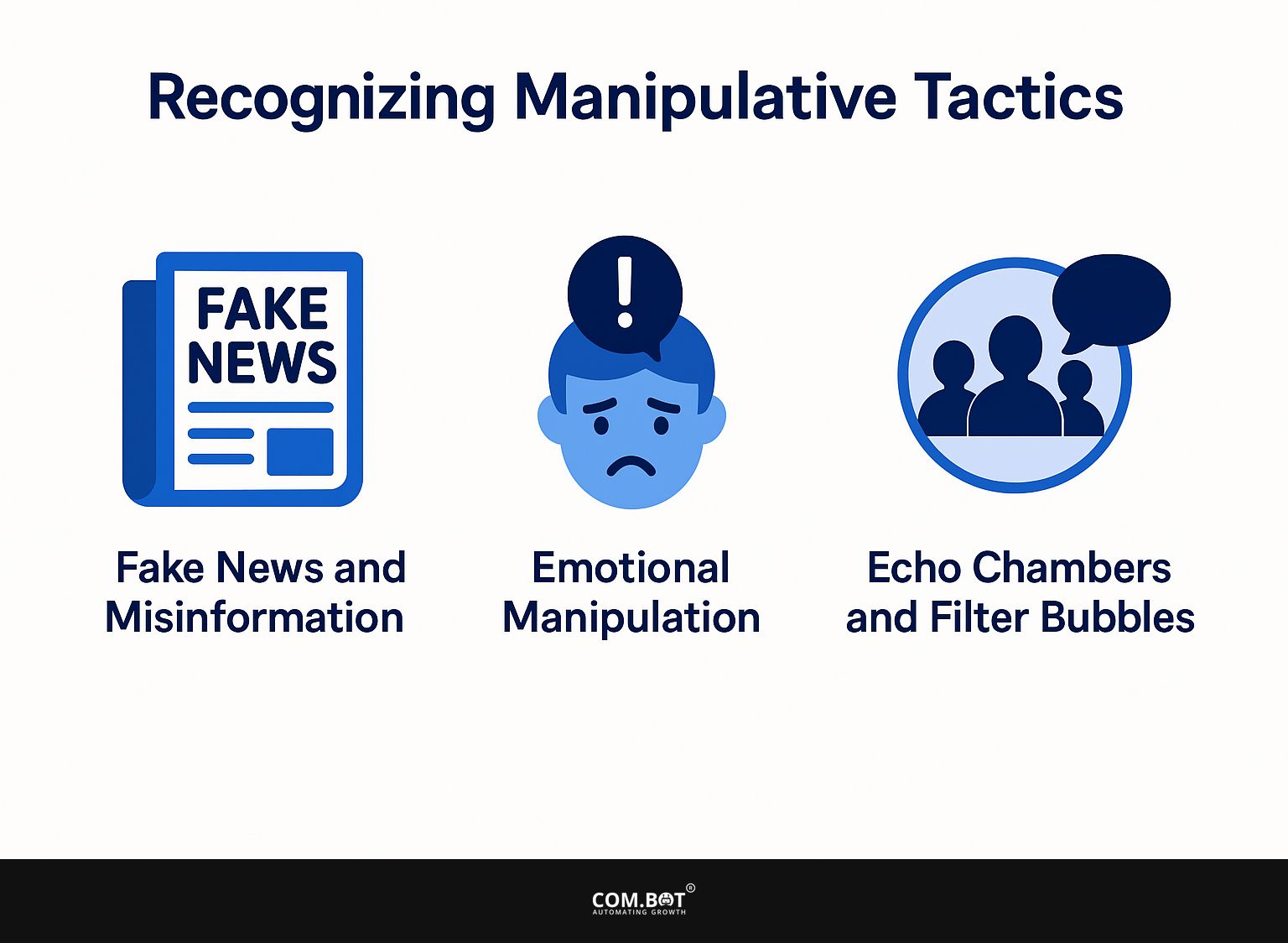
1. Fake News and Misinformation
Fake news often spreads rapidly across platforms, undermining trustworthiness and distorting public perceptions. To combat fake news, begin by identifying key characteristics, such as sensationalized headlines, lack of attributed sources, and emotional appeals rather than factual evidence.
Use tools like Snopes and FactCheck.org to check claims that seem doubtful. For example, if you encounter a shocking headline, cross-check it using these resources before sharing.
Use TinEye or Google Reverse Image Search to verify the source and authenticity of images. By employing these strategies, you can contribute to a more informed public discourse.
2. Emotional Manipulation
Social media often uses emotional tricks to make people angry or scared, causing them to interact more with the content. Techniques like fearmongering often involve presenting exaggerated threats, such as citing inflated statistics about crime rates or health risks.
For instance, a widely shared post might claim that a certain vaccine causes severe side effects in 90% of cases, despite the fact that research shows the actual figures are much lower.
Guilt-tripping plays on users’ emotions, like urging them to share a post to ‘save the children’ from harm. Studies show that these emotional messages lead to more shares and build certain online communities. This makes people more likely to be influenced later on.
3. Echo Chambers and Filter Bubbles
Echo chambers and filter bubbles create environments where users are exposed only to information that reinforces their existing beliefs. Look for different news outlets to get a broader view.
Begin by following different news sources that cover a range of political views and locations. Tools like Feedly help you gather updates from various websites, making it simpler to find fresh ideas.
Using social media tools like Twitter lists can help collect different viewpoints, including experts from various fields. Take some time each week to read about different topics or focused blogs. This can help you approach challenging problems with better clarity.
Personal Strategies for Mitigation
Using personal methods to manage exposure can greatly lower the risk of being influenced by social media.
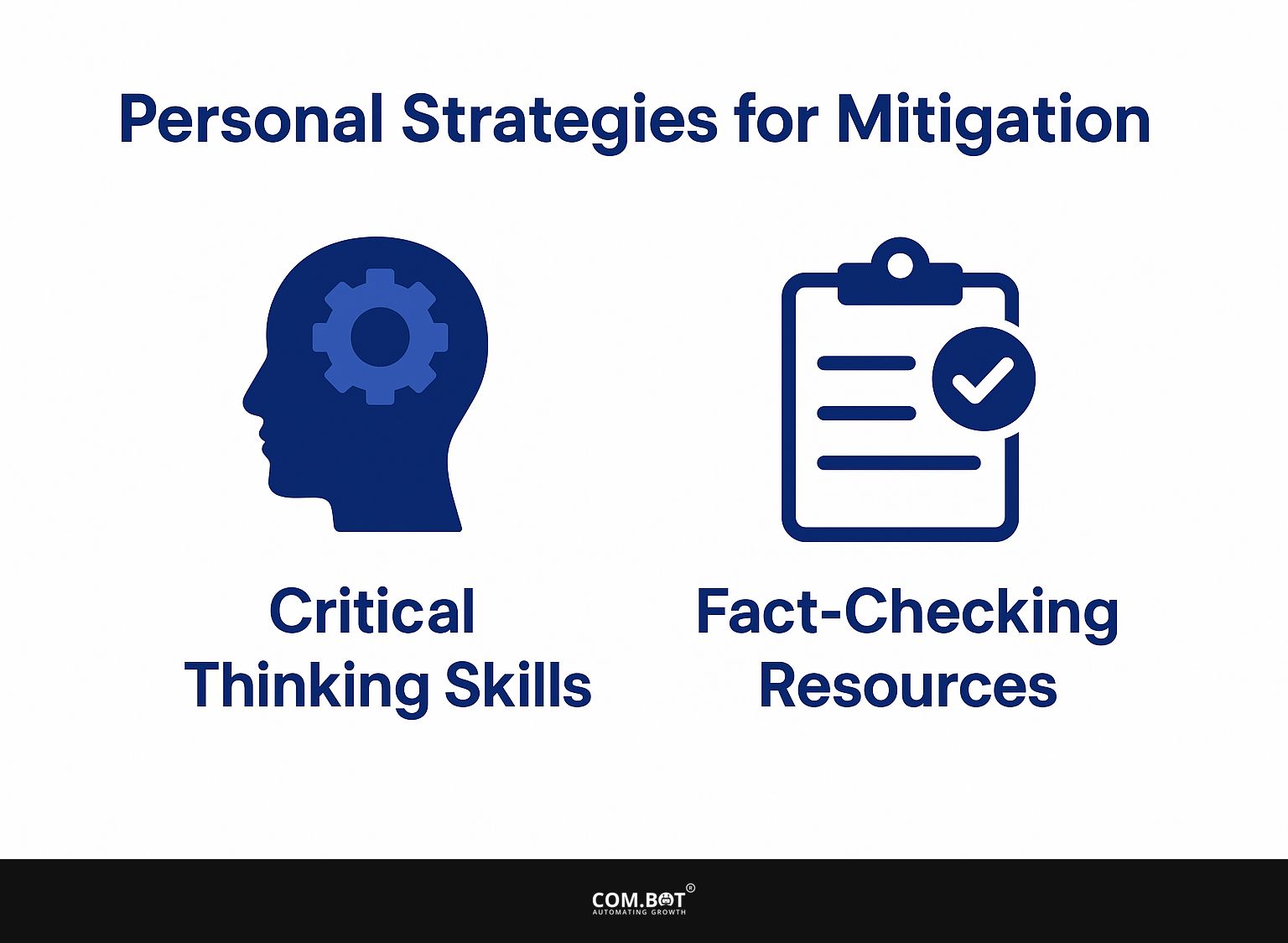
1. Critical Thinking Skills
Developing critical thinking skills enables individuals to analyze and evaluate information with greater accuracy. To improve your critical thinking, assess the reliability of various news sources.
Start by examining transparency: check if they cite sources and disclose funding. Consider utilizing tools like the Media Bias/Fact Check website to understand the political leanings and reliability of various outlets.
Engage in discussions or debates on platforms like Reddit, where contrasting viewpoints are common. Using these methods, along with tools like the Critical Thinking Toolkit, can greatly improve your ability to think critically.
2. Fact-Checking Resources
Utilizing fact-checking resources is essential for verifying the authenticity of information before sharing it online. Two reputable fact-checking websites are FactCheck.org and PolitiFact.
FactCheck.org focuses on providing nonpartisan analysis and includes a wide range of topics, often filtering claims from political speeches and advertisements. In contrast, PolitiFact employs a more interactive approach, rating statements on its Truth-O-Meter, which can help users gauge the reliability of information quickly.
To have a thorough check, use both sources together: FactCheck.org for detailed analysis and PolitiFact for its clear rating system.
Platform-Specific Techniques
Learning techniques specific to each platform can help users use social media more wisely and manage their data better.
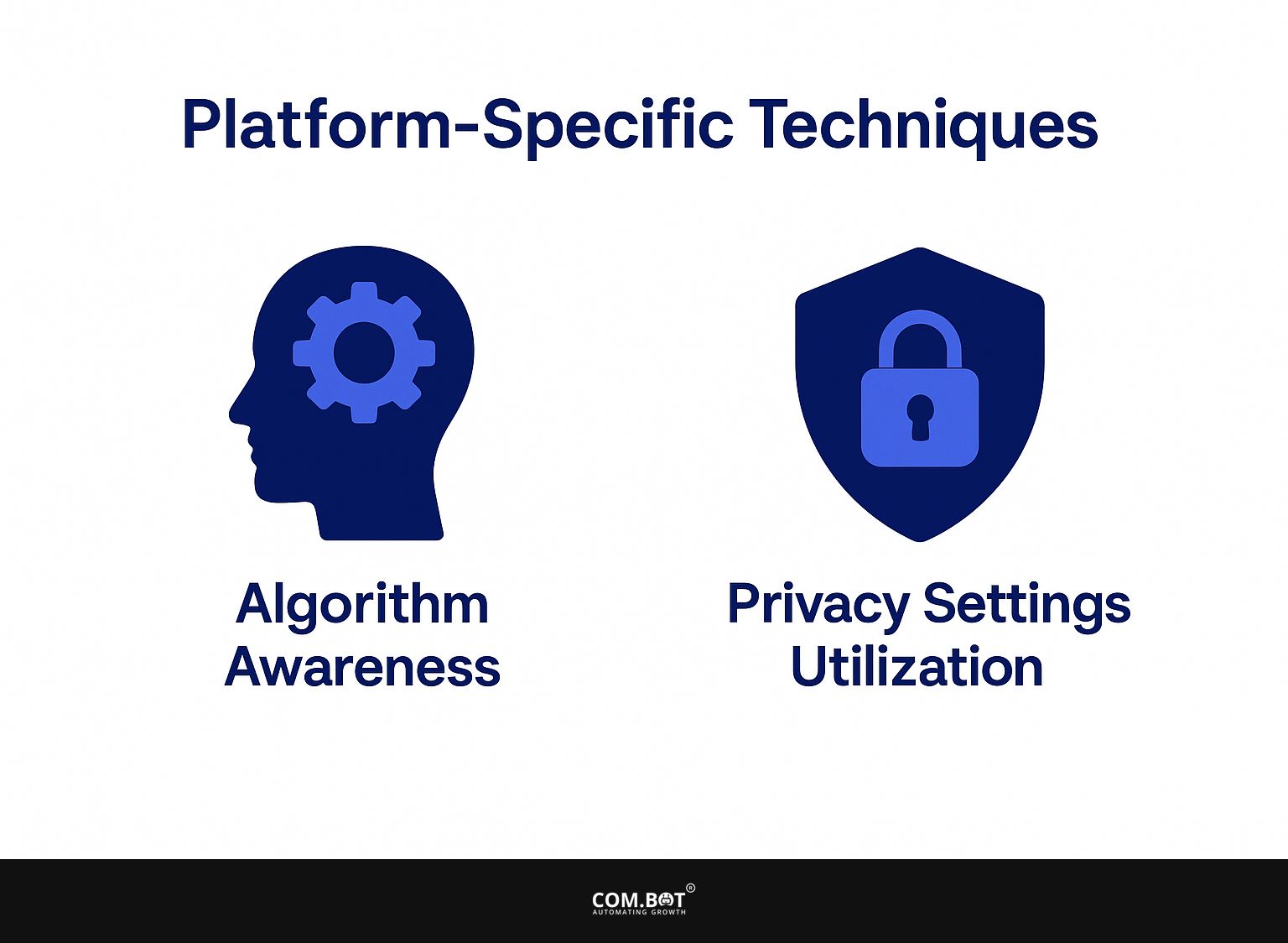
1. Algorithm Awareness
Knowing how algorithms affect what content you see can help users find a variety of viewpoints. To work well with algorithms, modify your content feeds.
On Twitter, open your settings, turn off the ‘Show the best Tweets first’ option, and select ‘Latest Tweets.’ This change makes sure you see posts as they happen instead of focusing on popular ones.
Similarly, on platforms like Instagram, engage with accounts that promote diverse viewpoints more frequently. Liking, commenting, or sharing content from different users signals the algorithm to diversify your feed. Regularly curating your engagement habits can significantly broaden your exposure to varied opinions.
2. Privacy Settings Utilization
Utilizing privacy settings effectively can protect user data and reduce exposure to manipulative advertising.
- On Facebook, go to ‘Settings & Privacy’ and click on ‘Settings.’ In the ‘Privacy’ section, you can control who can see your posts and restrict who can view your profile.
- Twitter allows you to enable tweet protection by going to ‘Privacy and Safety’ in settings, ensuring only approved followers can view your tweets.
- For Instagram, tap ‘Privacy’ and toggle on ‘Private Account’ to restrict access to your content.
These features give users the ability to manage their online presence and improve the safety of their personal data.
Community Initiatives
Community programs are important for informing and teaching people about how social media can be misused. To better understand the techniques involved, explore our deep dive into how social bots spread misinformation.
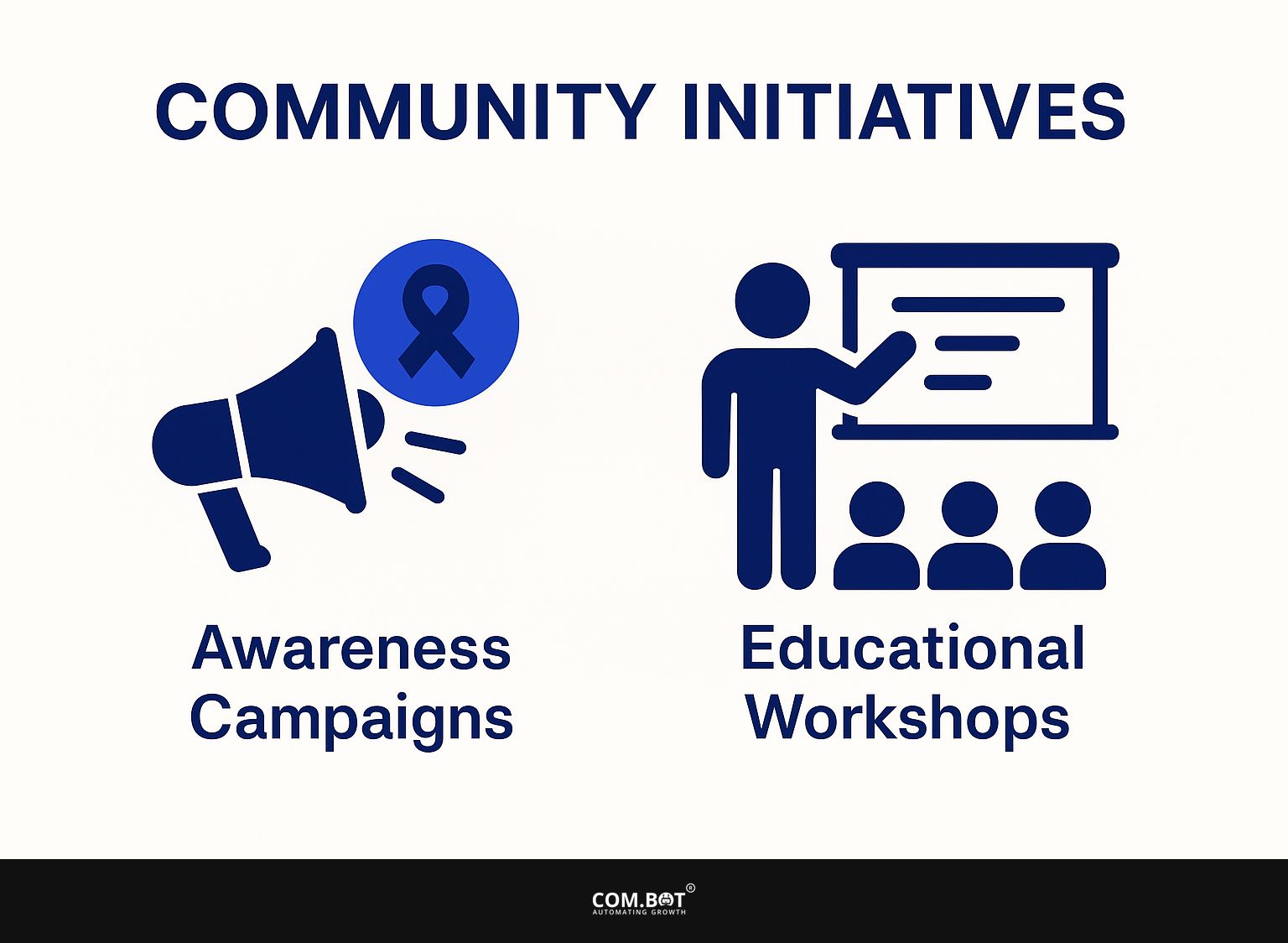
1. Awareness Campaigns
Awareness campaigns are designed to educate people about misinformation and how it impacts democratic systems. One impactful example is the News Integrity Initiative, which developed resources to educate users about media literacy and critical thinking.
Metrics for measuring the success of such campaigns can include:
- Tracking engagement rates on social media posts
- Evaluating shifts in people’s knowledge through surveys
- Monitoring website traffic for educational content
Utilizing tools like Google Analytics and social listening software can help evaluate the reach and effectiveness of campaign messages. Organizations can use this data to improve their strategies for stronger results.
2. Educational Workshops
Educational workshops can equip participants with the skills necessary to critically analyze digital information. To design effective workshops on digital literacy, begin with a structured outline that includes interactive sessions, case studies, and hands-on activities.
Organizations like the Digital Safety Coalition host events focusing on real-world applications of digital tools and critical thinking. Feedback metrics such as pre- and post-surveys assess knowledge gained and participant engagement levels.
Checking on discussions or projects started after the workshop helps show how the training is applied in real situations. Using a detailed method helps people learn and creates a group of knowledgeable online users.
Frequently Asked Questions
Social media manipulation is the practice of using deceptive tactics to influence public opinion on social media platforms.
Some typical methods involve making fake profiles, using automated programs to increase message visibility, and sharing false information.
Look for suspicious or repetitive posts and accounts, and do your own research on the information being shared.
Social media manipulation can lead to the spread of false information, manipulation of public opinion, and damage to individuals or organizations.
Creating and enforcing policies against fake accounts and bots, promoting media literacy, and fact-checking information can help mitigate social media manipulation.
Be cautious of information shared on social media, fact-check before sharing or reposting, and report suspicious accounts or posts.
